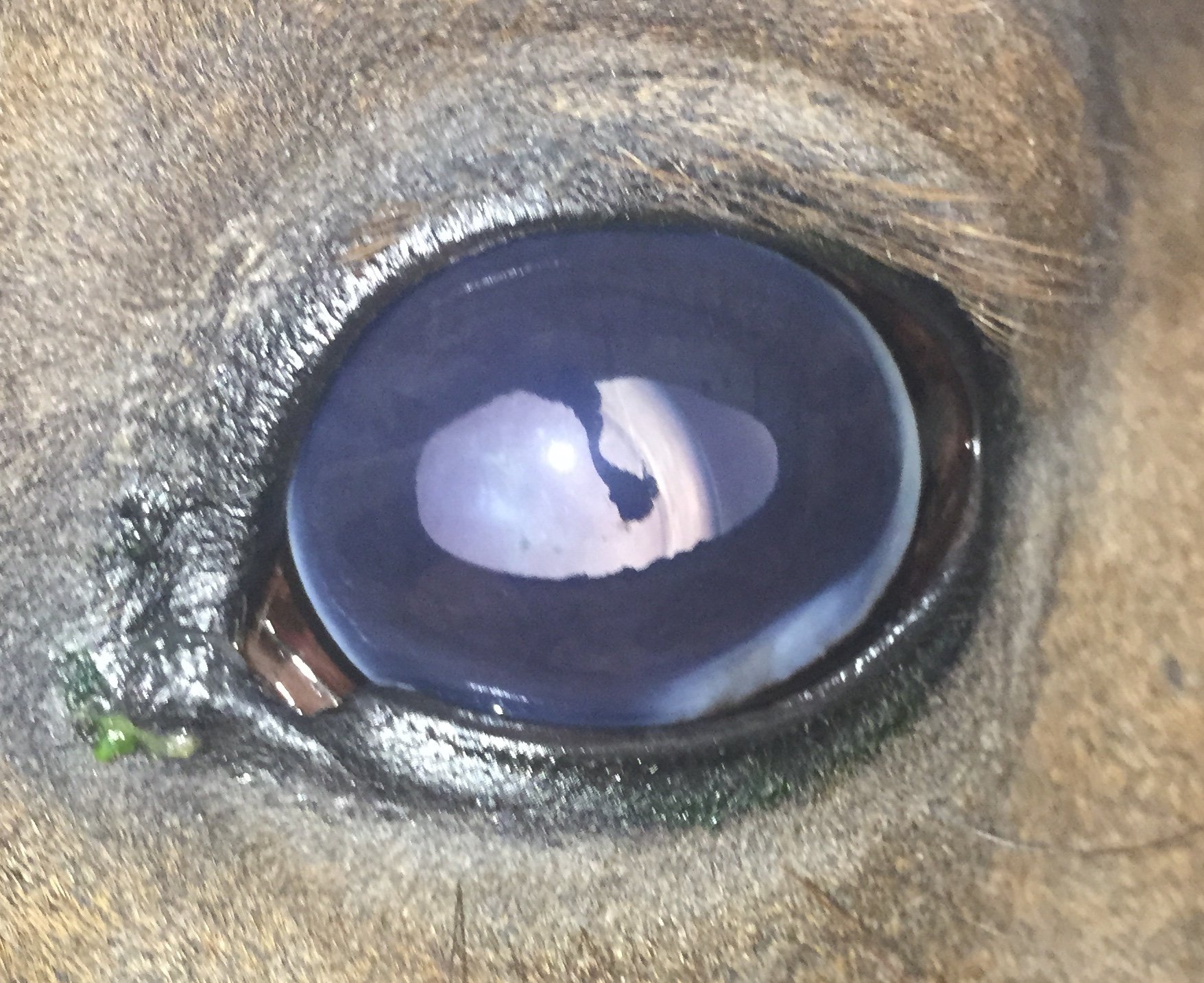Blunt Ocular Trauma
Blunt trauma lens luxation and ICE disinsertion
Blunt Ocular Trauma
Kristin Fischer, DVM, DACVO
What is blunt ocular trauma?
Blunt ocular trauma occurs when the eye or globe is impacted by a blunt object. Blunt ocular trauma in animals usually results in severe intraocular damage, and the prognosis in most of these cases is guarded to grave for vision.
In many animals, blunt trauma occurs secondary to a bite or attack from another pet (usually a sudden, brief snap over food or toy), but blunt injuries also occur secondary to collisions with hard objects, strikes from objects like balls (tennis ball, golf ball, etc) and explosions from fireworks. Anything that collides with the eye at an increased speed or with enough force or weight to cause a forceful traumatic injury would be classified as blunt ocular trauma.
The eye may suffer numerous injuries because of the trauma including corneal ulceration, corneal laceration, anterior uveitis (inflammation within the eye), bleeding within or around the eye, or blinding consequences such as retinal detachment or rupture of the eye. Depending on the type of trauma, fractures may occur to the surrounding bones of the orbit (eye socket) or skull. Long term complications may also include cataract formation or glaucoma (elevated pressure in the eye).
In mild cases, prompt evaluation by a veterinarian followed by treatment to control the inflammation within the eye and treatment of corneal ulceration if present is key to successful management and preservation of vision.
In more severe cases, the eye is instantly and permanently blinded by the impact and usually fills with blood. When an eye fills with blood it is called hyphema, and the blood within the eye will obscure the normally visible structures inside the eye like the iris and pupil. In patients that do not have a chance for restoration of vision, the goal will be comfort for the pet. In some pets, comfort can be achieved with medical management but in others, removal of the eye (enucleation) may be required. An examination by a veterinary ophthalmologist can determine the long-term prognosis for vision and comfort of the eye.

